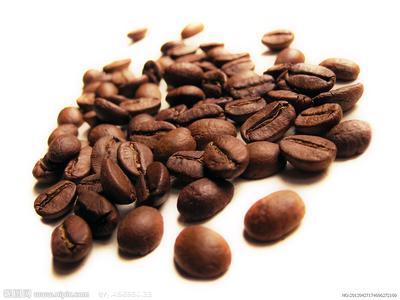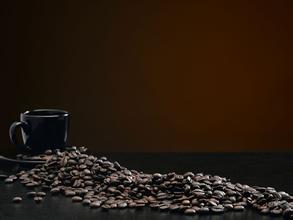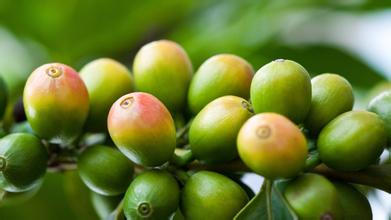Coffee powder medium baking deep baking hand-punching steps
Coffee powder medium roast deep roast hand brewing steps
Next, the temperature rises from 205° C to about 220° C, the color of the coffee changes from light brown to medium brown, and there is a weight loss of about 15%. This chemical process, called pyrolysis, changes the chemical composition of coffee beans and releases carbon dioxide. After the first explosion, there is a pause in the explosion sound, followed by a brief endothermic process, followed by an exothermic process known as the second explosion. A second pyrolysis occurs at 225° C and the color changes to a moderate blackish brown.
The second crack is faster, and the coffee bean takes on an oily sheen and becomes brittle. At this stage, its ingredients begin to carbonize, producing a charred characteristic. You can smell the coffee before it pops for the first time. The first burst reflects the physical stretching properties of coffee and the chemical reactions associated with it, such as the formation of water and the release of carbon dioxide. When the temperature reaches its peak, a second burst occurs, when the cellulose, matrix and coffee beans all begin to crack.
The darker the Robusta beans are baked, the more flavor they exhibit; the darker the Arabica beans are baked, the more flavor and character they lose. Moderately baked, however, allows them to display their deliciousness.
Automatic sorters separate high-quality coffee beans from a large number of coffee beans, eliminating beans that are too light or too dark, and applying very sophisticated production control techniques to reduce the percentage of defective coffee beans, including ultraviolet fluorescence analyzers to identify moldy beans; and three-color mapping techniques to create color fingerprints (yellow, green, red and infrared) for each coffee bean.
Soluble coffees require vacuum packaging because they are highly absorbent. In coffee roasted coffee, soluble coffee does not contain a lot of volatile matter, and most soluble coffee is made from Robusta coffee. Robusta coffee is cheaper than Arabica coffee and has more caffeine

Important Notice :
前街咖啡 FrontStreet Coffee has moved to new addredd:
FrontStreet Coffee Address: 315,Donghua East Road,GuangZhou
Tel:020 38364473
- Prev

Are capsule powder and coffee powder the same?-can coffee powder be brewed directly?
Are capsule powder and coffee powder the same? can coffee powder be brewed directly? in order to appeal to consumers, coffee capsules or powder bags can not only produce different tastes of espresso, but also combine the preferences of most people to produce coffee capsules that can be made for cappuccino, mocha or latte, such as the Dolce Gusto series glue produced by Nespresso.
- Next

Coffee roaster brand-which brand of coffee roaster is good
Coffee roaster brand-coffee roaster what brand is good every city in the world has its preferred baking tendency. In Tokyo, micro-deep medium baking is more popular, but slowly it also tends to deep baking. As for Kansai, deep baking has been popular in the past. New York, as its name suggests, generally prefers urban baking, but because it is inhabited by a variety of people
Related
- Beginners will see the "Coffee pull flower" guide!
- What is the difference between ice blog purified milk and ordinary milk coffee?
- Why is the Philippines the largest producer of crops in Liberia?
- For coffee extraction, should the fine powder be retained?
- How does extracted espresso fill pressed powder? How much strength does it take to press the powder?
- How to make jasmine cold extract coffee? Is the jasmine + latte good?
- Will this little toy really make the coffee taste better? How does Lily Drip affect coffee extraction?
- Will the action of slapping the filter cup also affect coffee extraction?
- What's the difference between powder-to-water ratio and powder-to-liquid ratio?
- What is the Ethiopian local species? What does it have to do with Heirloom native species?

